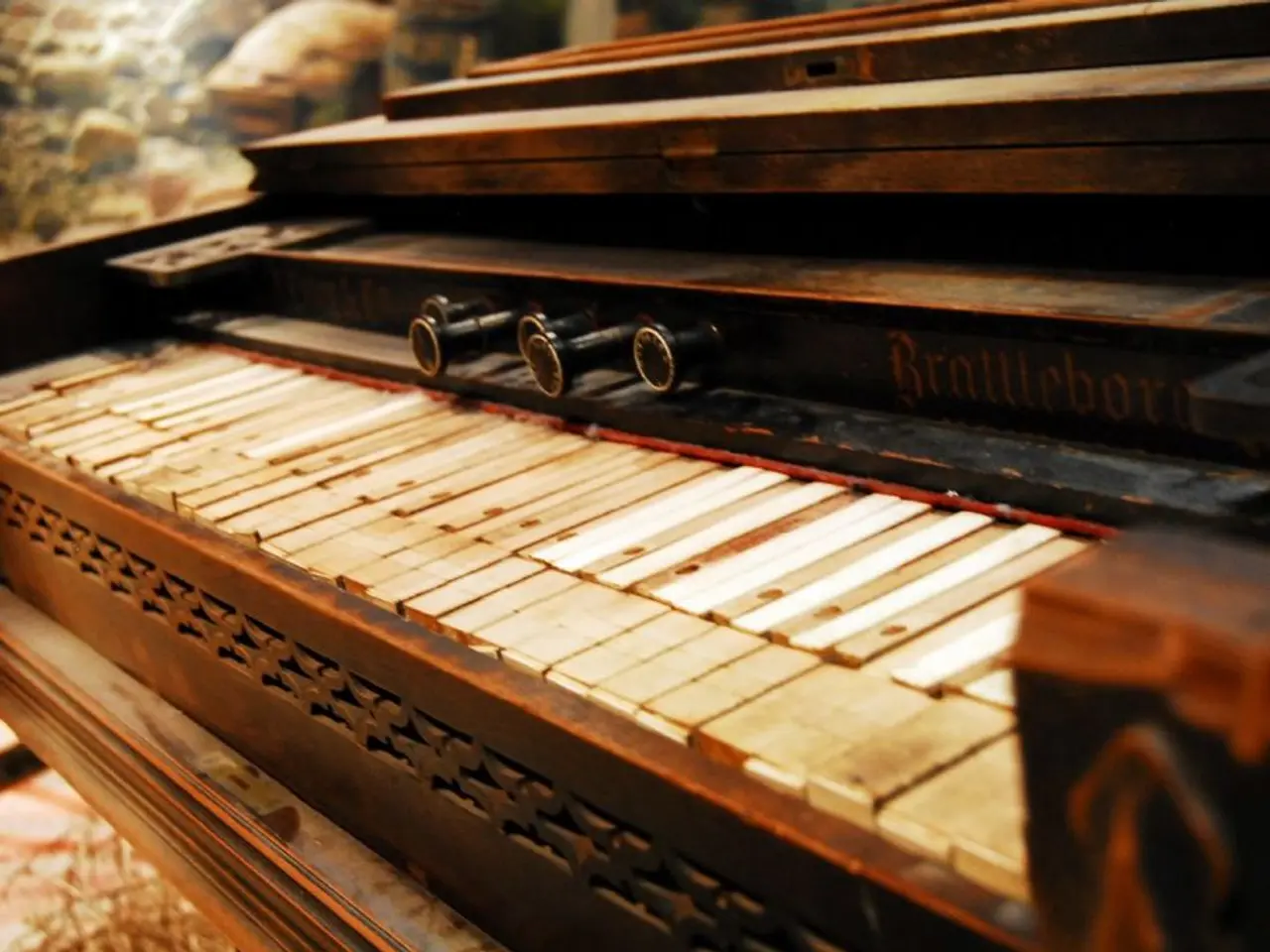Pedal Sostenuto: Delving into Its Past and application
=====================================================================
The piano, a versatile instrument with various pedals, boasts a unique feature called the sostenuto pedal. Often found in the middle position on a grand piano, this pedal offers a layer of complexity and expressiveness that sets it apart from its counterparts.
Functionally, the sostenuto pedal holds up the dampers only for the notes played when the pedal is engaged, allowing those notes to ring while other subsequently played notes do not sustain. This contrasts with the sustain pedal, which lifts all the dampers and sustains all notes played until it is released.
This selective sustain feature is particularly useful for creating layers within the music and preserving definition in complex textures. Intricate pieces with dense chordal structures can benefit greatly from the sostenuto pedal, as it enables pianists to hold bass notes or chords while freely playing others, maintaining clarity and preventing the sound from becoming muddy.
In traditional and contemporary piano compositions, the sostenuto pedal is used to sustain specific harmonic or melodic tones continuously, supporting sustained sonorities underneath more active passages. This adds an expressive sophistication to the music, making it a valuable tool for both pianists and composers.
However, the sostenuto pedal is often underutilized due to its less common usage and the fact that some pianos do not have a true sostenuto pedal. In modern repertoire where intricate layering is required, pianists can employ the sostenuto pedal for clearer voice separation and controlled pedal effects.
The sostenuto pedal found significant development in the United States, particularly with Steinway & Sons. The company patented a version of the sostenuto pedal in 1874, which was a substantial improvement over its European predecessors. This milestone in piano engineering marked the integration of the sostenuto pedal into Steinway's Model D grand pianos.
Composers such as Maurice Ravel and Claude Debussy have employed the sostenuto pedal for its ability to sustain bass notes, creating a haunting resonance. In modern compositions, the sostenuto pedal is often used to create a pedal point - a single, sustained tone over which changing harmonies are played. This technique is often employed in cinematic and experimental music.
In summary, the sostenuto pedal provides selective sustain to chosen notes, distinguishing it from the general sustain pedal. Its value lies especially in complex pieces requiring independent sustained tones alongside unaffected notes. The sostenuto pedal offers composers a unique tool to paint with sounds, adding depth and texture to their musical canvases.
- An advanced pianist might discover using the sostenuto pedal as a technique beneficial for creating layers in complex music compositions, similar to the works of composers like Maurice Ravel and Claude Debussy.
- For beginners learning to play piano, mastering the sostenuto pedal can prove challenging, but with practice, it can provide expressive sophistication and clarity in intricate pieces with dense chordal structures.
- To entertain an audience, a pianist may employ the sostenuto pedal to create a pedal point - a single, sustained tone over which changing harmonies are played, often found in cinematic and experimental music.








